Showing Spotlights 1009 - 1016 of 2877 in category All (newest first):
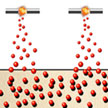 A major challenge in nanotechnology is that of determining how to introduce green and sustainable principles when assembling individual nanoscale elements to create working devices. For instance, textile nanofinishing is restricted by the many constraints of traditional pad-dry-cure processes, such as use of costly chemical precursors to produce nanoparticles, high liquid and energy consumption, production of harmful liquid wastes, and multistep batch operations. By integrating low-cost, scalable, and environmentally benign aerosol processes, these constraints can be circumvented while leading to a new class of multifunctional fabrics.
A major challenge in nanotechnology is that of determining how to introduce green and sustainable principles when assembling individual nanoscale elements to create working devices. For instance, textile nanofinishing is restricted by the many constraints of traditional pad-dry-cure processes, such as use of costly chemical precursors to produce nanoparticles, high liquid and energy consumption, production of harmful liquid wastes, and multistep batch operations. By integrating low-cost, scalable, and environmentally benign aerosol processes, these constraints can be circumvented while leading to a new class of multifunctional fabrics.
Jul 25th, 2016
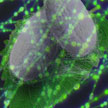 The serious threat of particulate matter (PM) air pollution to human health spurs development of advanced filter technologies. Particular efforts have been made in designing air filters with both high filtration efficiency and low airflow resistance by utilizing carbon nanotubes and electrospun polymer and inorganic nanofibers. In new work, scientists explored the performance of electrospun silk nanofiber membranes as air filters, which showed both of lightweight and high efficient features.
The serious threat of particulate matter (PM) air pollution to human health spurs development of advanced filter technologies. Particular efforts have been made in designing air filters with both high filtration efficiency and low airflow resistance by utilizing carbon nanotubes and electrospun polymer and inorganic nanofibers. In new work, scientists explored the performance of electrospun silk nanofiber membranes as air filters, which showed both of lightweight and high efficient features.
Jul 13th, 2016
 Newly developed nanocomposites possess efficient photothermic properties for highly targeted interfacial phase transition reactions that are synergistically favorable for seawater catalysis and desalination. The nanocomposites are seawater and photostable for practical solar conversion of seawater to simultaneously produce clean energy and water. This work defines the forefront of plasmonic photothermic technology, which is vastly untapped and has broad implications in other fields.
Newly developed nanocomposites possess efficient photothermic properties for highly targeted interfacial phase transition reactions that are synergistically favorable for seawater catalysis and desalination. The nanocomposites are seawater and photostable for practical solar conversion of seawater to simultaneously produce clean energy and water. This work defines the forefront of plasmonic photothermic technology, which is vastly untapped and has broad implications in other fields.
Jul 12th, 2016
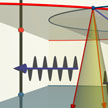 A theory analysis of energy / momentum conservation laws in a spatially confined coupled system of nearly free electrons and phonons hints that the absorption of electromagnetic waves by a metallic nano-object hosting longitudinal vibration modes may allow channeling the absorbed energy either into heat or into terahertz radiation, depending on the nano-objects' shape and size. This offers an explanation for the size selectivity of small nanoparticles in radio frequency hyperthermia, and suggests design for novel terahertz radiation sources.
A theory analysis of energy / momentum conservation laws in a spatially confined coupled system of nearly free electrons and phonons hints that the absorption of electromagnetic waves by a metallic nano-object hosting longitudinal vibration modes may allow channeling the absorbed energy either into heat or into terahertz radiation, depending on the nano-objects' shape and size. This offers an explanation for the size selectivity of small nanoparticles in radio frequency hyperthermia, and suggests design for novel terahertz radiation sources.
Jul 11th, 2016
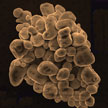 Although developed only recently, inorganic halide perovskite quantum dot systems have exhibited comparable and even better performances than traditional quantum dots in many fields. They are expected to be applied in display and lighting technologies. Researchers now have reported an interesting cyclable surface dissolution and recrystallization phenomenon of inorganic perovskite crystals. This allows them to freely change size between nanometer and micrometer scales, and can be used to healing the defects inside perovskite films and hence improve the performances of optoelectronic devices.
Although developed only recently, inorganic halide perovskite quantum dot systems have exhibited comparable and even better performances than traditional quantum dots in many fields. They are expected to be applied in display and lighting technologies. Researchers now have reported an interesting cyclable surface dissolution and recrystallization phenomenon of inorganic perovskite crystals. This allows them to freely change size between nanometer and micrometer scales, and can be used to healing the defects inside perovskite films and hence improve the performances of optoelectronic devices.
Jul 7th, 2016
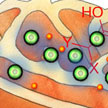 Studies show hat mitochondrial metabolism theoretically is a plausible target for cancer therapy. Mitochondria are the primary controllers of cellular suicide; however, cancer cells trick this normal cellular mechanism and evade this process leading to uncontrolled cellular growth. To trigger the suicide switch back on, new work uses a highly selective nanotechnology-based approach to deliver a widely available small molecule commonly found as a by-product of a water chlorination process.
Studies show hat mitochondrial metabolism theoretically is a plausible target for cancer therapy. Mitochondria are the primary controllers of cellular suicide; however, cancer cells trick this normal cellular mechanism and evade this process leading to uncontrolled cellular growth. To trigger the suicide switch back on, new work uses a highly selective nanotechnology-based approach to deliver a widely available small molecule commonly found as a by-product of a water chlorination process.
Jul 6th, 2016
 There is an often-asked question: 'When are we finally going to start seeing nanotechnology products on the market?' As a matter of fact, the average home is already filled with products enhanced or reliant upon nanotechnology. In fact, there are several online repositories listing the more than 2,000 commercially available products that incorporate nanotechnology. The application of nanotechnology in some areas, such as batteries, microelectronics and sunscreens is relatively well known. Let's take a virtual tour through a home to see what else we can find.
There is an often-asked question: 'When are we finally going to start seeing nanotechnology products on the market?' As a matter of fact, the average home is already filled with products enhanced or reliant upon nanotechnology. In fact, there are several online repositories listing the more than 2,000 commercially available products that incorporate nanotechnology. The application of nanotechnology in some areas, such as batteries, microelectronics and sunscreens is relatively well known. Let's take a virtual tour through a home to see what else we can find.
Jul 5th, 2016
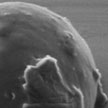 Researchers have demonstrated that the coupling of pristine graphene sheets on practically any polymer surface can be accomplished in mild reaction conditions and in aqueous medium. The method leaves intact the 2D planar structure of graphene preserving its original features. This novel hybrid construct enables in vivo photoacoustic signal enhancement and is a very promising step forward for an implementation of photoacoustic imaging, a powerful preclinical diagnostic tool.
Researchers have demonstrated that the coupling of pristine graphene sheets on practically any polymer surface can be accomplished in mild reaction conditions and in aqueous medium. The method leaves intact the 2D planar structure of graphene preserving its original features. This novel hybrid construct enables in vivo photoacoustic signal enhancement and is a very promising step forward for an implementation of photoacoustic imaging, a powerful preclinical diagnostic tool.
Jun 30th, 2016
 A major challenge in nanotechnology is that of determining how to introduce green and sustainable principles when assembling individual nanoscale elements to create working devices. For instance, textile nanofinishing is restricted by the many constraints of traditional pad-dry-cure processes, such as use of costly chemical precursors to produce nanoparticles, high liquid and energy consumption, production of harmful liquid wastes, and multistep batch operations. By integrating low-cost, scalable, and environmentally benign aerosol processes, these constraints can be circumvented while leading to a new class of multifunctional fabrics.
A major challenge in nanotechnology is that of determining how to introduce green and sustainable principles when assembling individual nanoscale elements to create working devices. For instance, textile nanofinishing is restricted by the many constraints of traditional pad-dry-cure processes, such as use of costly chemical precursors to produce nanoparticles, high liquid and energy consumption, production of harmful liquid wastes, and multistep batch operations. By integrating low-cost, scalable, and environmentally benign aerosol processes, these constraints can be circumvented while leading to a new class of multifunctional fabrics.
 Subscribe to our Nanotechnology Spotlight feed
Subscribe to our Nanotechnology Spotlight feed





